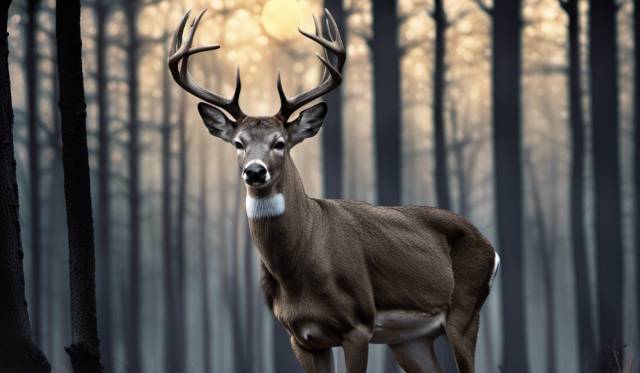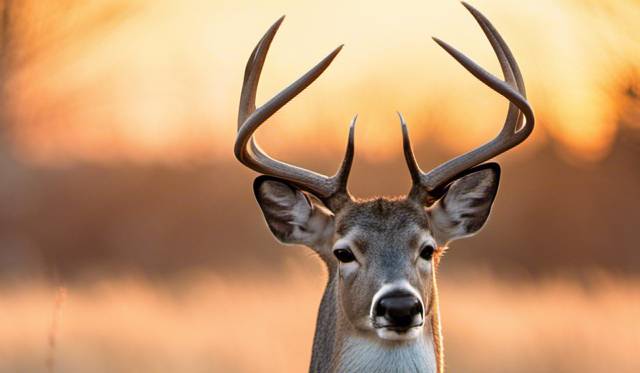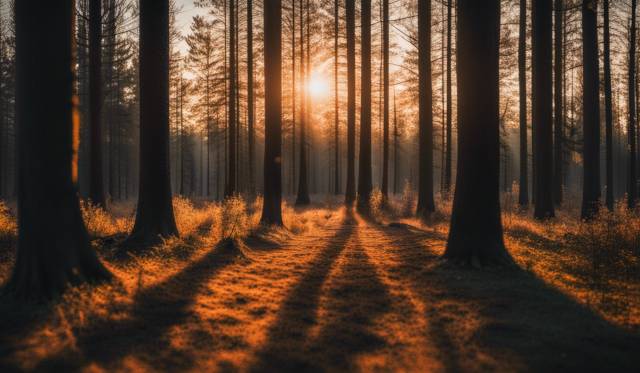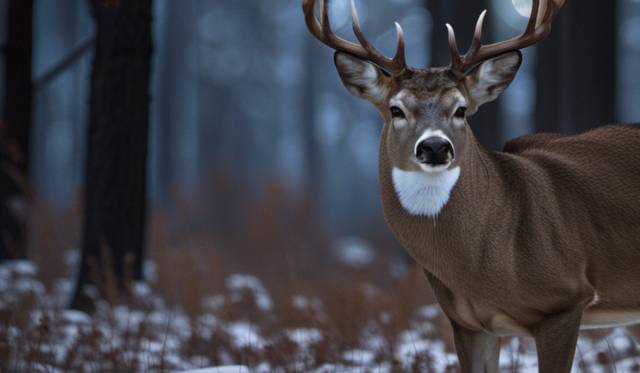Have you found yourself sitting in your deer stand wondering why sightings of deer during daylight hours are rare? Are deer nocturnal? Perhaps they sleep all day and forage for food at night.

When it comes to deer and their sleep patterns, they do not sleep in the same way humans do. Deer are light sleepers and engage in short periods of rest throughout the day and night.
Contents
Are Deer Nocturnal?
Deer are not classified as nocturnal animals. Instead, they are considered crepuscular, meaning they are most active during the twilight hours, right before sunrise and after sunset. This is the time when deer typically search for food, water, and new bedding areas.
However, deer are not strictly crepuscular either. Some species exhibit metaturnal behavior, meaning they have periods of activity during both daytime and nighttime hours.
Although deer aren’t specifically nocturnal, their activity patterns can be influenced by various factors such as human presence, predator movement, and changes in seasons. This flexibility in their behavior allows deer to adapt to various environments and conditions, ensuring their survival in the wild.
If you are a deer hunter or wildlife watching enthusiast, knowing the differences between nocturnal, diurnal, crepuscular, and metaturnal animals can be beneficial.
- Nocturnal animals are primarily active at night
- Diurnal animals are most active during daylight hours
- Crepuscular animals increase their activity around the dusk and dawn twilight hours
- Metaturnal animals sleep at different periods during the day and during the night

Crepuscular Behavior of Deer
Deer are not strictly nocturnal; rather, they exhibit crepuscular behavior. Crepuscular animals are highly active during twilight hours, particularly at dawn and dusk.
Dusk and Dawn Activity
Deer activity tends to be the most active during dusk and dawn, which allows them to optimize their feeding habits and evade predators like wolf, coyotes or bear. During these hours, cooler temperatures are generally present, the light levels are low enough for them to blend in with their surroundings while still being able to see clearly.
Dusk and dawn not only provide ideal conditions for feeding, but also safe conditions for mating and socializing. Keep in mind that deer can still be active during the day or night, but their peak activity takes place during twilight hours.
Factors Influencing Deer Activity
Weather Conditions
Deer activity is largely influenced by environmental conditions such as temperature, light levels, and barometric pressure. In general, deer are most active during the cooler periods of the day when temperatures are down and there is less direct sunlight.
Rain can also affect deer behavior, as they might move during rainfall to disguise the sound of their movements. Deer are considered to be elusive prey animals. Keep an eye on these weather factors to better predict deer activity.
Deer Hunting Pressure
The presence of deer hunters can influence the patterns of whitetail deer. Due to this pressure, deer may alter their habits in an attempt to avoid hunters. As a result, they might become more active during nighttime hours or change their usual routes to escape detection.
It’s essential for you to consider hunting pressure when planning your deer hunting strategies, as deer can quickly adapt to human activity in their environment.
Seasonal Changes
Seasonal changes are another crucial factor affecting deer activity. The length of daylight hours, availability of food, and changes in temperature can all influence their behavior.
For example, during the mating season (the rut), deer are likely to be more active as mature bucks search for female deer.

Do Deer Eat at Night?
Food Sources
Deer are herbivores, which means their primary food sources consist of plant materials such as grass, shrubs, and leaves. In addition to these, they also consume fruits, acorns, and even insects. As their food sources are widely available, it allows them to be more flexible with their feeding times and patterns.
Feeding Times
Although deer are not strictly nocturnal, they do have a preference for feeding during certain times of the day. During the twilight hours, just before sunrise and after sunset, deer generally go out in search of food, water, or new bedding areas.
Deer Species and Sleep Patterns
Deer have unique sleeping patterns that differ from traditional deep sleep. They engage in short periods of rest throughout the day and night. During these resting periods, deer remain light sleepers and stay alert to their surroundings to quickly respond to any potential threats.
White-Tailed Deer
Whitetail Deer (Odocoileus virginianus) are a common species found in North America. These deer are known to be crepuscular, meaning they are most active during twilight hours, around dawn and dusk.
Whitetail deer tend to all generally follow this sleep pattern, especially mature buck, making it easier for you to predict when they’re most likely to be active. whitetail deer sleep patterns can be influenced by human behavior and predator movement in their habitat.
Mule Deer
Mule Deer (Odocoileus hemionus) are another North American species with similar sleep patterns to whitetails. They are also considered crepuscular. Mule Deer usually rest during the day, especially in areas where they feel safe from predators.
Elk
Elk (Cervus canadensis), also known as Wapiti, have sleep patterns that can vary depending on their location and time of year. They are generally most active during the early morning and late evening hours like other deer species.
During the winter months, Elk may be more active during the day, possibly due to the colder temperatures.
Red Deer
Red Deer (Cervus elaphus), are another species known for their crepuscular habits. They are typically most active during the dawn and dusk hours, and like other deer species, they can adjust their patterns based on environmental factors.
You’ll find that Red Deer may seek shelter during the day, ensuring they are well-rested and safe from potential threats.

Frequently Asked Questions
Is a deer nocturnal?
No, deer are not strictly nocturnal animals. They are crepuscular creatures, most active during the dawn and dusk twilight hours.
Are deer active all night?
While deer may be active during nighttime, their primary active periods are dawn and dusk. They do not spend the entire night moving around. Deer also take opportunities to rest at night and sleep during the day.
Do deer sleep at night or day?
Deer sleep mostly during the day and may also rest at night. They typically wake up from their daytime sleep just before dusk to feed and move before the night starts.
At what hours are white-tailed deer most active?
White-tailed deer are most active during the twilight hours of dawn and dusk.
Why are deer only moving at night?
Deer may appear to move only at night due to their crepuscular nature, making them most active during dawn and dusk. As many humans are less active during these times, people might not observe deer during their peak activity, leading to the assumption that they are nocturnal deer.